Don't wanna be here? Send us removal request.
Text
Breaking the Binary Box
For those of us who grew up before the emergence of popular streaming services like Netflix and Hulu, which have, admittedly, become household names in their own right—we accessed the majority of our cartoons through classic “family friendly” networks such as Disney, Nickelodeon, and Cartoon Network. While the shows I often watched as a child were “family friendly” in the sense that there was, understandably, a total absence of adult concepts like profanity, nudity, and violence—there was also a severe lack of diversity and inclusion. One would think that such positive ideas would be commonplace, especially in children’s shows, and yet topics like gender identity and sexual orientation have also been deemed “too adult” and treated as cultural taboos for decades. Even so, I’ve never noticed a lack of straight love, or a lack of characters depicting the heroic, “manly” protagonist, and the oh-so many damsels in distress (I’m talking to you, Disney)—it’s as if these these narratives were somehow more appropriate or child friendly than its non-binary, nonconforming, same-gender love counterparts.
Let’s face it—entertainment media was and, in many ways, still is dominated by male-centered stories and heteronormative gender stereotypes. Within the past several years, however, children’s entertainment has progressed and continues to do so. As our cultural climate changes, our media follows suit. Streaming sites and applications now allow us to easily access animated programs, not only from America, but from Japan, providing us with new, cultural lenses through the consumption of Japanese animations, otherwise known as anime.
Ultimately, my interest in both anime and American cartoons led me to further explore how, exactly, these two cultures approach the narratives of non-binary and nonconforming characters. Specifically, I wanted to know how the presence of these types of characters helped facilitate a more inclusive media environment. After conducting a coding analysis, I found that all of the shows I examined exhibited similar themes like acceptance and friendship. While anime shows were more likely to describe its non-binary / nonconforming characters using positive language, American shows signified these themes through dialogue and actions. Upon looking at the frequency of diversity and inclusion in each show, my numbers were almost equally split—each show that had a non-binary or nonconforming lead had an equally diverse cast.
While my research project was by no means extensive in its data sets, it certainly revealed that the American and Japanese entertainment industries are both able and willing to understand the value of non-binary and nonconforming visibility. Although the shows I examined aren’t necessarily accurate representations of anime and American cartoons, they are, nonetheless, examples of forward-thinking shows that can, hopefully, serve as inspirations for similar (inclusive) programs looking to normalize and celebrate diversity.
0 notes
Photo

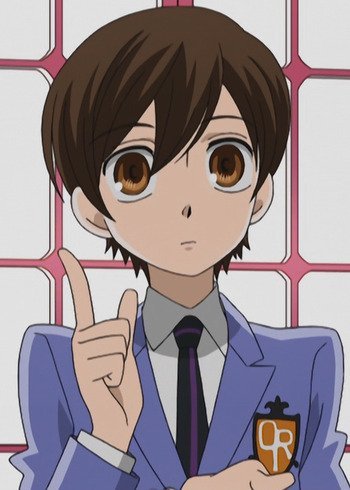
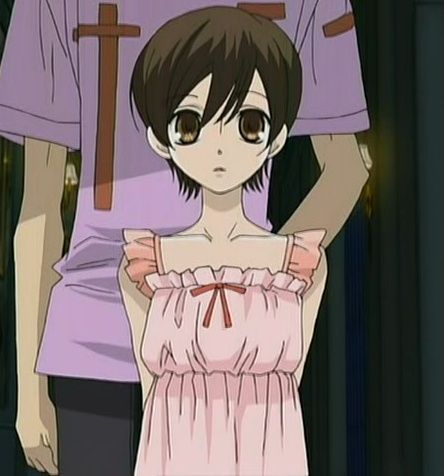
Haruhi Fujioka, Ouran High School Host Club
“Besides, it doesn’t really matter, does it? Why should I care about appearances and labels anyway. It’s what’s on the inside that counts.” – Haruhi Fujioka
In the pilot episode, the show introduces its main protagonist, Haruhi Fujioka, as a timid, bookish scholar student who is first assumed to be male by the original host club members—this is most likely because of Haruhi’s neutral clothing style; at first meet, they wear a sweater, collared shirt, pants and short hair. Haruhi’s gender is rather ambiguous throughout the majority of the episode, but as each member starts to realize Haruhi’s biological sex, which is eventually revealed as female, the show signifies these “aha” moments by depicting lightbulbs. In response to Tamaki’s (president of the host club) initial shock, Haruhi says, "I don't really care whether you guys recognize me as a boy or a girl...it's more important for a person to be recognized for who they are rather than for what sex they are." It’s through this that Haruhi shows their friends (and audiences) how comfortable and accepting they are of their own identity. The show’s value of acceptance is further emphasized by the club’s readiness to welcome Haruhi into their close-knit friend group.
1 note
·
View note
Photo
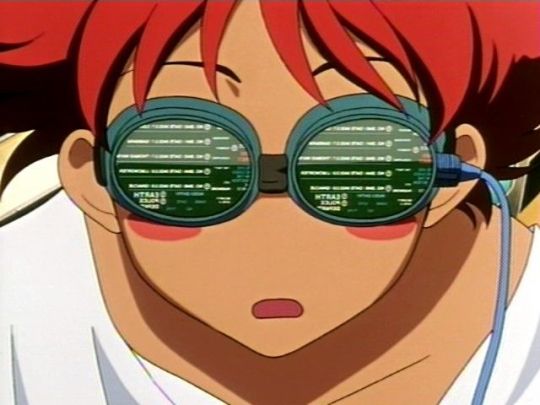


Radical Edward, Cowboy Bebop
“Edward knows everything.” - Radical Edward
Despite being introduced later on in the show, Edward makes a profound impact on the Bebop Team—by employing their genius-level intelligence, Ed helps navigate the team’s missions, oftentimes saving them during seemingly near-death experiences. In the series, Ed’s gender is shrouded in ambiguity—although the team first refers to Ed as “he,” later on finding out that Ed’s biological sex is female, throughout the show, Ed only refers to themself in third person. It’s in this manner, that Ed transcends the gender binary and, frankly, the rest of society’s labels. To them, Edward is simply Edward.
1 note
·
View note
Photo



Stevonnie, Steven Universe
“You wanna dance? Let's go. And it's Stevonnie; I am not your baby.” - Stevonnie
Stevonnie is one of the first non-binary, intersex characters in American children’s animation. In other words, Stevonnie is truly iconic. A fusion of main protagonist, Steven, and his best friend, Connie, Stevonnie maintains an androgynous appearance with more feminine-focused features (i.e. long hair and wide hips). Perhaps one of the most moving moments of Stevonnie’s introduction is when Garnet tells them, "Stevonnie, listen to me, you are not two people and you are not one person. You are an experience. Make sure you're a good experience." Garnet’s words serve as a clear representation of one common, reoccurring theme in Steven Universe—acceptance. Rather than pressuring Stevonnie to “unfuse” like Pearl initially suggests, Garnet reassures them that gender is fluid; it’s an experience that changes and, therefore, should not be confined within the binary box created (and expected) by society.
0 notes
Photo

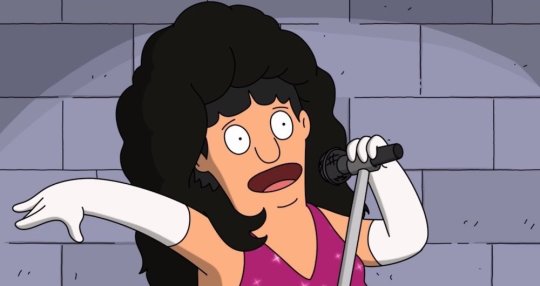
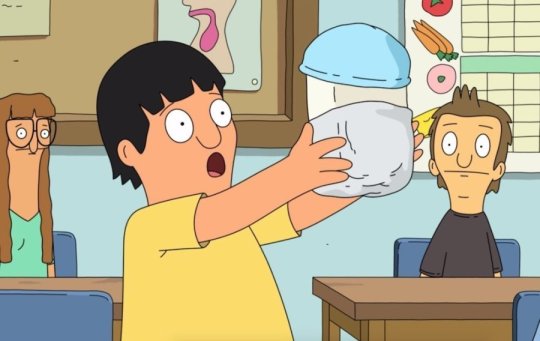
Gene, Bob’s Burgers
“I've got a great group...the cutie patooties! It's a girl group I've been putting together.” - Gene
Gene, who is affectionately known as “Genderfluid Gene” to Bob’s Burgers fans, is one of the show’s main, nonconforming and beloved characters. Gene alternates between exhibiting what could be traditionally considered as “masculine” and “feminine” traits. An example of his masculinity is depicted in season 3 episode 12, when Gene proudly boasts a full head of hair and thick mustache so as to more closely resemble his father, Bob. To contrast, in season 3 episode 20, Gene forms a girl group called “The Cutie Patooties” in which he decides to throw on a glittering, magenta Dreamgirls-esque dress while confidently performing a song called, “Girls Being Girls,” suggesting that Gene is, in some ways, a girl, himself—in this manner, Gene challenges the gender norm that a boy must always be tough or “manly” and never sensitive or sassy.
1 note
·
View note